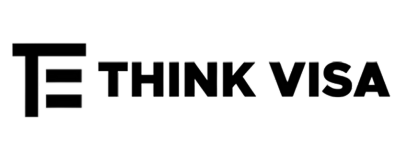
Labour Agreements
Overview
Labour agreements enable approved businesses to sponsor skilled overseas workers when there is a demonstrated need that cannot be met in the Australian labour market and where standard temporary or permanent visa programs are not available.
Labour agreements are developed between the Australian Government (represented by the Department) and employers. They are generally in effect for five years and provide for visas to be granted under one or more of the following visa programs:
Temporary Skill Shortage (TSS) visa (subclass 482)
Employer Nomination Scheme visa (subclass 186)
Skilled Employer-Sponsored Regional (Provisional) visa (subclass 494)
Types of labour agreements
There are five types of labour agreements:
Company Specific labour agreements
Designated Area Migration Agreements (DAMA)
Global Talent Employer Sponsored (GTES) agreements
Industry labour agreements
Project agreements
There are currently nine industry agreements in place:
Dairy
Fishing
Meat
Minister of Religion
On-hire
Pork
Restaurant (fine dining)
Advertising
Horticulture
Lodgement process
On receipt of a complete labour agreement request:
1. We will assess the information you have provided and advise you of the outcome.
2. If we approve your request for a labour agreement, we will send you a labour agreement document for review and signature.
3. When you and all parties have signed the document and returned it to us, the labour agreement comes into effect. We will confirm when the agreement is in effect.
If your existing labour agreement is due to expire and you wish to renew it, you will need to lodge a new labour agreement request in ImmiAccount.
Requesting a change (variation requests)
If you want to make a change to your existing labour agreement, email us the following information with your request:
quote your current Permission Request ID (PRID) – this will be in correspondence received from the Department at the time your existing labour agreement was approved
a brief indication of what terms, concessions or nomination ceilings you wish to vary (subject to our assessment, we may send additional forms for you to complete)
an updated workforce plan, including any retrenchment or redundancies of Australian workers
evidence of all recruitment activities in the immediate 6 months before your request
evidence of salary for each occupation in your agreement for an Australian employee and a skilled overseas worker.
Please lodge your variation request in a timely manner. This is important to ensure your business can continue to nominate workers under the terms of the agreement. It also ensures that any associated nominations or visa applications that are not yet finalised are not delayed or impacted.
Assessment process
We assess labour agreements on a case-by-case basis and actual processing times can vary due to individual circumstances including:
whether you have lodged a complete application, including all necessary supporting documents
how quickly you respond to any requests for more information
Labour agreement related nominations and visa applications
The labour agreement will tell you the number of skilled overseas workers you can nominate in each year of the agreement. It will also tell you which visas you may use to sponsor skilled overseas workers and the occupations.
As the employer, you need to complete a nomination application for a skilled overseas worker through ImmiAccount. Once lodged, provide the nomination Transaction Reference Number (TRN) to the skilled overseas worker who can then lodge their individual visa application (through the labour agreement stream of the relevant visa subclass). They require the TRN to link their visa application to your nomination application.
Labour agreement sponsor obligations
Each labour agreement functions as a contract setting out terms that you must comply with. Additionally, there are a range of legislated sponsorship obligations that you must adhere to. These generally align with the obligations applicable to Standard Business Sponsors. Failing to comply with the agreement or legislative requirements can result in suspension or termination of the agreement. Sanctions, penalties or other enforcement measures may also be considered.
The Australian Border Force and the Department may monitor compliance with labour agreements through audits and site visits.
Accreditation
Words from our clients
Expert lawyers, just a click away.
Let us solve your migration problems. We provide:
Trusted legal advice with peace of mind for your migration journey
Prepare, lodge and liaise with the Department on behalf of you and your family
Project-manage the application until the visa is granted and bring you to Australia
















